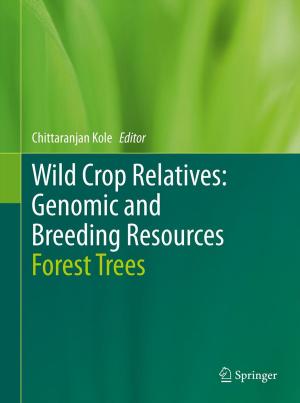The Biology of Reaction Wood
Nonfiction, Science & Nature, Nature, Plant Life, Trees, Technology, Agriculture & Animal Husbandry| Author: | ISBN: | 9783642108143 | |
| Publisher: | Springer Berlin Heidelberg | Publication: | January 8, 2014 |
| Imprint: | Springer | Language: | English |
| Author: | |
| ISBN: | 9783642108143 |
| Publisher: | Springer Berlin Heidelberg |
| Publication: | January 8, 2014 |
| Imprint: | Springer |
| Language: | English |
The book is a fundamental reference source on reaction wood for wood scientists and technologists, plant biologists, silviculturists, forest ecologists, and anyone involved in the growing of trees and the processing of wood. It brings together our current understanding of all aspects of reaction wood, and is the first book to discuss both compression wood and tension wood.
Trees produce reaction wood to maintain the vertical orientation of their stems and the optimum angle of each branch. They achieve this by laying down fibre cell walls in which differences in physical and chemical structure from those of normal fibres are expressed as differential stresses across the stem or branch. This process, while of obvious value for the survival of the tree, causes serious problems for the utilisation of timber. Timber derived from trees containing significant amounts of reaction wood is subject to dimensional instability on drying, causing twisting, bending and splitting. It is also difficult to work as timber, and for the pulp and paper industry the cost of removing the increased amount of lignin in compression wood is substantial. This has both practical and economic consequences for industry.
Understanding the factors controlling reaction wood formation and its effect on wood structure is therefore fundamental to our understanding of the adaptation of trees to their environment and to the sustainable use of wood.
The topics covered include:
-Morphology, anatomy and ultrastructure of reaction wood
-Cell-wall polymers in reaction wood and their biosynthesis
-Changes in tree proteomes during reaction wood formation
-The biomechanical action and biological functions of reaction wood
- Physical and mechanical properties of reaction wood from the scale of cell walls to planks
-The detection and characterisation of compression wood
-Effects of reaction wood on the performance of wood and wood-based products
- Commercial implications of reaction wood and the influence of forest management on its formation
The book is a fundamental reference source on reaction wood for wood scientists and technologists, plant biologists, silviculturists, forest ecologists, and anyone involved in the growing of trees and the processing of wood. It brings together our current understanding of all aspects of reaction wood, and is the first book to discuss both compression wood and tension wood.
Trees produce reaction wood to maintain the vertical orientation of their stems and the optimum angle of each branch. They achieve this by laying down fibre cell walls in which differences in physical and chemical structure from those of normal fibres are expressed as differential stresses across the stem or branch. This process, while of obvious value for the survival of the tree, causes serious problems for the utilisation of timber. Timber derived from trees containing significant amounts of reaction wood is subject to dimensional instability on drying, causing twisting, bending and splitting. It is also difficult to work as timber, and for the pulp and paper industry the cost of removing the increased amount of lignin in compression wood is substantial. This has both practical and economic consequences for industry.
Understanding the factors controlling reaction wood formation and its effect on wood structure is therefore fundamental to our understanding of the adaptation of trees to their environment and to the sustainable use of wood.
The topics covered include:
-Morphology, anatomy and ultrastructure of reaction wood
-Cell-wall polymers in reaction wood and their biosynthesis
-Changes in tree proteomes during reaction wood formation
-The biomechanical action and biological functions of reaction wood
- Physical and mechanical properties of reaction wood from the scale of cell walls to planks
-The detection and characterisation of compression wood
-Effects of reaction wood on the performance of wood and wood-based products
- Commercial implications of reaction wood and the influence of forest management on its formation















